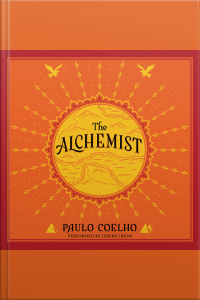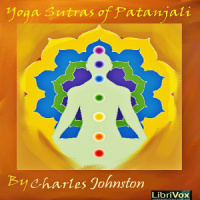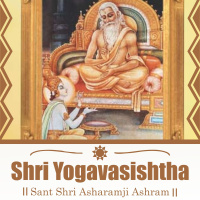Sinopsis
Spiritual teachings by Shunyamurti, the founder and director of the Sat Yoga Institute - a wisdom school, ashram and the home of a vibrant spiritual community based in Costa Rica.
Episodios
-
Control Lies in the Surrender of Control – 06.16.11
16/06/2011 Duración: 09minExcerpt: “In the ancient world it was the governing principle, the understanding that the more surrendered you are to God, and thus the more useful you are as an instrument of God, then the better would be your destiny because God will make use of those who are surrendered to being instruments and vehicles and mediums of the Divine Work. And those who are too busy with their own egos—either with their with their pleasures or with their neurotic suffering—and who tune out the presence of God, then will have a destiny in which God tunes out their presence as well. And all of the religious traditions are based on this understanding. So in a way, you do have control of your destiny in the sense that the deeper and more profound is your surrender to God, the more complete, the more constant, the more continual—and the more pure your sacrifice of the ego, which is the act of surrender—then the greater will be the ultimate destiny of your soul. And so it is in your control. But the control lies in the surrender of c
-
The Trinity – 06.09.11
09/06/2011 Duración: 11minExcerpt: “We can see the Christian Trinity in many ways in both the Ramayana and the Mahabharata. . . . In the Ramayana, it is Rama, God the Father, and Sita, who is the soul/the Holy Spirit, who goes into exile at some point, captured by the demonic forces. And then you have the Son, Hanuman, who is a monkey god. Very odd, why would they choose a monkey god to represent the Son? And it’s because the human being in the state of ego-consciousness is a monkey: its monkey mind is always chattering, its interests are mainly in food and sex, and it is wild and will not come under discipline. So the monkey is a wonderful metaphor. And yet this monkey, Hanuman, becomes divine. . . . It is said that God stands for G.O.D.: Generation, Operation, Destruction. . . . And we are now at a point where our current world cannot be sustained any longer because of the lack of love.” Recorded on the evening of Thursday, June 9, 2011.
-
Gandhi’s Lesson – 06.06.11
06/06/2011 Duración: 11minExcerpt: “There is a story told about Mahatma Gandhi. . . . One day they drove him [Gandhi] out to an insane asylum. . . . He was looking at the inmates, and there was one guy who interested him and he wandered away and sat down in front of this inmate. And the inmate looked up at him and said, ‘Who are you?’ And he said, ‘Well, I’m Gandhi.’ The inmate laughed, and he said, ‘You know, they all say that when they first get here. You’ll get over it.’ Gandhi was taken aback. He realized that these were very true words; they hit him in the heart. This was a Mahavakya.” Recorded on the evening of Thursday, June 6, 2011.
-
Buddhism: A De-ligion – 05.31.11
31/05/2011 Duración: 21min(Note: the following teaching was given as an introduction to the film The Buddha) Excerpt: “As soon as you start talking about Buddhism, you’re no longer talking about Buddhism because, technically and precisely, Buddha’s great insight is that there are no words to describe the Real. . . . So there’s no way of talking about what we’re here to talk about. One can only realize—and the act of realizing it, in an instantaneous—in fact not even instantaneous, but timeless moment of clear intuition of Ultimate Reality . . . called ‘pragya.’ . . . There isn’t a Buddhism; there are many Buddhisms. . . . Some do it as the different turnings of the wheel of the dharma. But you can also divide it into the Hinayana and the Mahayana and the Vajrayana, etc. You can also say there’s the Theravada Buddhism of Sri Lanka which is very different than the Tibetan Buddhism, different than the Ch’an, different than the Japanese Zen, which is different than the other Japanese schools like the Jodo Shinshu, the ‘Pure Land Buddhism
-
“Be Without Grasping” – 05.19.11
19/05/2011 Duración: 08minExcerpt: “When we meditate,” reveals Shunyamurti, the founder of the Sat Yoga Institute in Costa Rica, “we are making effort to reach our own natural state of being. It’s odd that you have to make effort to be natural, but this is how far away the human being has come from its own nature. Rather than having a nature any longer, the human being is conditioned by culture. The ego is an artificial construct that’s created and maintained by culture. . . . And we learn the rules of that culture and the intentions that we are supposed to live for, the values we are supposed to live by, and we become entrained by language. And from then on, pure consciousness, in its divine nature, gets filtered through this construct of what Lacan, the psychoanalyst, called ‘signifiers,’ language—master signifiers that determine our identity. And you become the subject of a signifier, of a certain set of words that determine the patterns of your life and the curvature of your emotional space, and that result in the repetition of va
-
Attention Deficit Disorder – 05.19.11
19/05/2011 Duración: 03minStudent Question: Can you say something about attention deficit in regards to meditation?
-
Public Speaking – 05.19.11
19/05/2011 Duración: 04minStudent Question: Can you speak about the fear of speaking in public and that connected to the process of mahavakya?
-
Facing Anxiety – 05.19.11
19/05/2011 Duración: 02minStudent Question: When you give up a prop, the anxiety is immediate. You can’t wait even a minute to deal with it. So what do you do to remedy that?
-
Hide-and-Seek – 05.12.11
12/05/2011 Duración: 09minExcerpt: “How many of you are here to achieve union with God?” asks Shunyamurti, the founder of the Sat Yoga Institute in Costa Rica. “Well that’s good because it’s very easy to do. You’ve picked the right goal. And the reason it’s easy to accomplish is that God is your own innermost Self. . . . So God is that absence which makes everything present. And the only reason that God manifests as absence is [because] we have abandoned God into that which God has made present. And then we have taken the miracle of what has been made present for granted and forgotten that we are in fact emanations of the same God that we are sometimes searching for and sometimes glad that we have lost, and that we hope has lost track of us. And then in other times we’re very anxious that God may have lost track of us. And it is this game that the ego plays of hide-and-seek with God that creates all of the suffering and torment and longing, nostalgia, agony, and ultimately the ecstasy of existence." Recorded on the evening of Thursday
-
2012 – 05.12.11
12/05/2011 Duración: 03minStudent Question: I’m really fascinated in the topic of 2012, but I don’t know a lot about it. I wanted to know if you could just give me a general sense of what’s going to happen.
-
The Censor – 05.05.11
05/05/2011 Duración: 01minStudent Comment: I always feel I’m forgetting things, and I’ve noticed this with my friends too. For example, one friend always tells me that she wants to remember the very sweet things that her boyfriend tells her but can’t. One would think that you should be able to remember important things, but I find I’m always forgetting things and then I have anxiety because I can’t remember.
-
The Sense of Imperfection is a Disease – 05.05.11
05/05/2011 Duración: 08minExcerpt: “‘The sense of imperfection is a disease and the sole source of every misery,’” reads Shunyamurti, the founder of the Sat Yoga Institute in Costa Rica. “So the truth is that we are all perfect, purnam. We are not imperfect. This is the illusion, the imperfection. But the illusion of imperfection comes with the belief that we are entities. [It] comes with the belief that consciousness is a manifestation of an organism, a body. And as long as your consciousness is identified with the body, through which it’s operating, there will be, of course, a sense of imperfection. And so that’s the illusion. And that knot has to be cut.” Recorded on the evening of Thursday, May 5, 2011.
-
Christ the Yogi – 04.30.11
30/04/2011 Duración: 04minStudent Question: Earlier you established some connection between Jesus and his connection to Yoga. Could you go a little more into detail?
-
Sat Yoga Satsang – April 2011 – 04.30.11
30/04/2011 Duración: 28minExcerpt: “The traditional yogic texts say that a yogic life is built on four pillars, and attending Satsang is one of those. The other three are: simplicity, leading a simple life without excess, without ostentation, without wastage. . . . truthfulness, a yogi is dedicated to being truthful—and more than just truthful in a factual sense, but leading an authentic life. . . . the third one is seva, or service, to lead a life that’s not based on getting as much as you can for yourself, but of giving as much as you can to the world. . . . Now, a Satsang, for those of you who haven’t been to one, the word “Sat” you’ll notice appears a lot in our discourse here, Sat refers to the Supreme Beingness, the truth of what we are when we take away all of the falseness and the mediated and artificial aspects of our self, when we get down to what is natural and eternal in ourselves. And yoga means “yoke,” union. . . . You know we tend to think that that it’s only people out there who sabotage our happiness, but it’s actuall
-
Definition of “Ego” – 04.30.11
30/04/2011 Duración: 04minStudent Question: Can you define “ego” in your own words?
-
What about the Id? – 04.30.11
30/04/2011 Duración: 01minStudent Question: So you mentioned the ego and the superego, which are Freudian terms, but where does the id fit into this?
-
The Only Thing “Untouchable” is the Ego – 04.14.11
14/04/2011 Duración: 10minExcerpt: “Sri Ramana Maharshi recognized that all of us are one Self, manifesting as many,” recalls Shunyamurti, the director of the Sat Yoga Institute in Costa Rica. “And because of this realization of our oneness, of course Ramana had no interest in the [Indian] caste system. . . . The lowest caste [in the Indian caste system] were called the ‘Chandalas,’ which can translate as ‘Untouchables.’ And you should never touch an untouchable; you’d have to go through some extraordinary ritual of purification. And Ramana laughed at that and said this is only a metaphor. The only real Chandala is the ego. That’s what you must never touch. You must never enter ego-consciousness...” Recorded on the evening of Thursday, April 14, 2011.
-
Where is “The Symbolic?” – 04.14.11
14/04/2011 Duración: 02minStudent Question: You’ve talked about “reality” and “The Real,” and I just wanted to know where “The Symbolic” is in relation to those. Excerpt: “It is between the two. Reality is a hallucination. And once you can grasp that symbolically, you can discover what is the source of that hallucination, or hologram, or matrix, whatever you want to refer to this plane as. And through your symbolic capacity of thinking, and your attention span, you can make your consciousness like a laser beam and focus it with your willpower to break through the illusion of reality, to discover the Real.” Recorded on the evening of Thursday, April 14, 2011.
-
A Question on Celibacy – 03.24.11
24/03/2011 Duración: 09minStudent Question: We often hear here that for thousands of years the celibacy has been undertaken in certain societies. And I’m assuming that that’s referring to the yogic tradition. I’m more familiar with Judaism and Islam, and in cultures built around those traditions—which have lasted for thousands of years—celibacy has not been practiced, to my knowledge, or if it has then it has been in a very different form. So I get a little confused when I hear that “for thousands of years, this has been done” or “that has been done,” and, at the same time, it’s been practiced for thousands of years in a totally different way. Could you please provide a little clarity on this matter? Excerpt: “If you study the Jewish tradition, as well as the Islamic tradition, you will find that they actually do encourage celibacy, up to a certain point in one’s life. And one is really not intended to marry until one has gone through the Talmud, for example, and reached a state of having put sexuality in the correct perspective, wh











